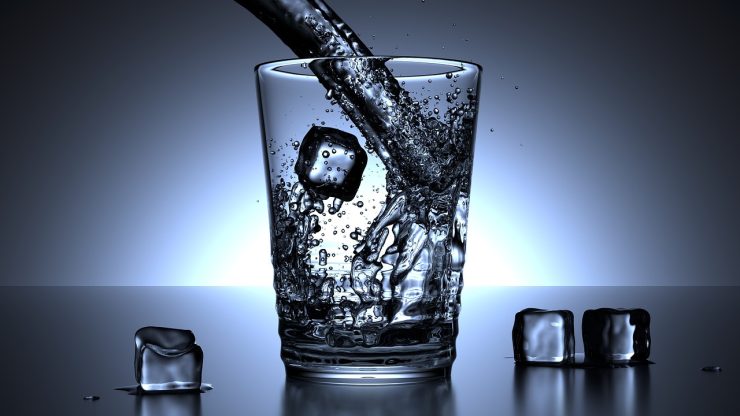Imagine you’re sipping a glass of water and unknowingly drinking a cocktail of medications—things like blood pressure meds, diabetes pills, birth control, antibiotics, and even epilepsy treatments. It may sound far-fetched, but studies have shown that these medications are actually turning up in drinking water across cities and towns in the U.S. and around the world in significant amounts.
How do these medications end up in the water? It happens through human excretion (yep, we flush them out) or when drugs are tossed down the toilet. Waste from pharmaceutical factories and massive animal feedlots also make their way into rivers and water supplies. You’d think water treatment plants would filter out these chemicals, but unfortunately, many medications slip through the cracks undetected.
A recent study published in Science Daily dove into the presence of pharmaceuticals in rivers worldwide. The study sampled 258 rivers, including major ones like the Thames in London and the Amazon in Brazil, and found traces of 61 different drugs, such as:
-
Carbamazepine (anti-epileptic)
-
Metformin (for diabetes)
-
Propranolol (for high blood pressure)
-
Sulfamethoxazole and Ciprofloxacin (antibiotics)
-
Loratadine (antihistamine for allergies)
-
Caffeine
-
Birth control hormones
This study is part of the Global Monitoring of Pharmaceuticals Project, and it’s one of the first to look at how widely medicinal contamination is affecting the environment. The findings are pretty eye-opening, especially when we realize that pharmaceutical pollution is happening on every continent.
Interestingly, the research also found a link between socio-economic status and the levels of pharmaceuticals in the water—basically, lower-income areas had higher levels of pollution. Cities with higher unemployment and poverty also showed higher levels of contamination. Unfortunately, some of the most polluted regions have been studied the least, including parts of sub-Saharan Africa, South America, and Southern Asia.
Big Pharma in Our Rivers
Many cities rely on rivers for their water supply. But, those same rivers are often dumping grounds for trash, medical waste, and untreated sewage. The high levels of pharmaceutical pollution in some areas can be traced to poorly managed wastewater disposal, medical waste along riverbanks, and pharmaceutical factories discharging waste directly into the water.
A 2004–2009 U.S. Geological Survey study found that wastewater treatment plants near pharmaceutical manufacturing facilities had up to 1,000 times more pharmaceutical waste than other plants across the U.S. that were not near these factories.
Farm Runoff
Pharmaceuticals in water aren’t just from factories. The livestock industry is another huge contributor. Farms use massive amounts of antibiotics and other drugs, and the runoff from feedlots ends up in rivers, streams, and even groundwater. Drugs like acetaminophen, caffeine, nicotine byproducts, antihistamines, and tranquilizers have also been found in water systems due to farm runoff.
Are You Drinking Your Neighbor’s Medication?
Another big source of pharmaceuticals in water comes from the millions of people taking medications. Any drugs that aren’t fully metabolized by the body are excreted and end up in the sewage system. Sadly, most wastewater plants just aren’t equipped to filter out these chemicals, and they can be detected miles downstream.
In places like Southern California, a large portion of drinking water comes from rivers, including the Colorado River. But, this river flows downstream from Las Vegas and various industrial farms where pharmaceuticals are routinely flushed into the water. Even with filtration, these drugs are difficult to completely remove.
Cities like Dallas and Las Vegas have become “hot spots” for pharmaceutical contamination. In fact, Dallas has a concentration of Active Pharmaceutical Ingredients (APIs) in its water that’s 10,000 nanograms per liter, while Las Vegas comes in at 5,000. In Philadelphia, they found a shocking 56 different drugs, including painkillers like acetaminophen, antibiotics like amoxicillin, and even addictive substances like nicotine and caffeine.
How Widespread Is This?
It’s not just happening in the U.S. Around the world, from Antarctica to Africa, researchers have found pharmaceutical ingredients in rivers and streams. These drugs include common medications like acetaminophen, antidepressants, antibiotics, and antihistamines. The only places where no pharmaceuticals were found in the water were Iceland and a remote village in Venezuela.
Sewage plants just aren’t built to remove pharmaceuticals, and no regulatory agencies have set standards for how much of these drugs are safe in our water. Without knowing what levels are safe, it’s hard to say how this is affecting us, but the possibility of side effects, addiction, and cumulative health issues from these chemicals is something we should consider.
What About Fish and Other Wildlife?
Pharmaceutical pollution isn’t just bad for humans—it’s impacting the wildlife too. Fish, for example, absorb pollutants from the water, and researchers have found high concentrations of antidepressants in their brains. Studies from Cornell University also found antibiotic-resistant bacteria in the Hudson River, likely from antibiotics in the water. Many fish species show biological changes—reproductive issues, behavioral changes, and more—because of the drugs in the water.
Bottom Line
On top of the usual industrial chemicals, you might be sipping on leftover pharmaceutical residue in your water. While it’s hard to say exactly how much of a long-term health risk this is, the fact remains that no one really knows how safe it is to drink these meds, even in tiny amounts.
My advice? If you’re concerned about the quality of your tap water, especially if you’re living near pharmaceutical manufacturing areas or using water from rivers, investing in a high-quality water filtration system like reverse osmosis or a Berkey system is a smart move. That way, you’ll at least know you’re filtering out as many of these harmful substances as possible.











